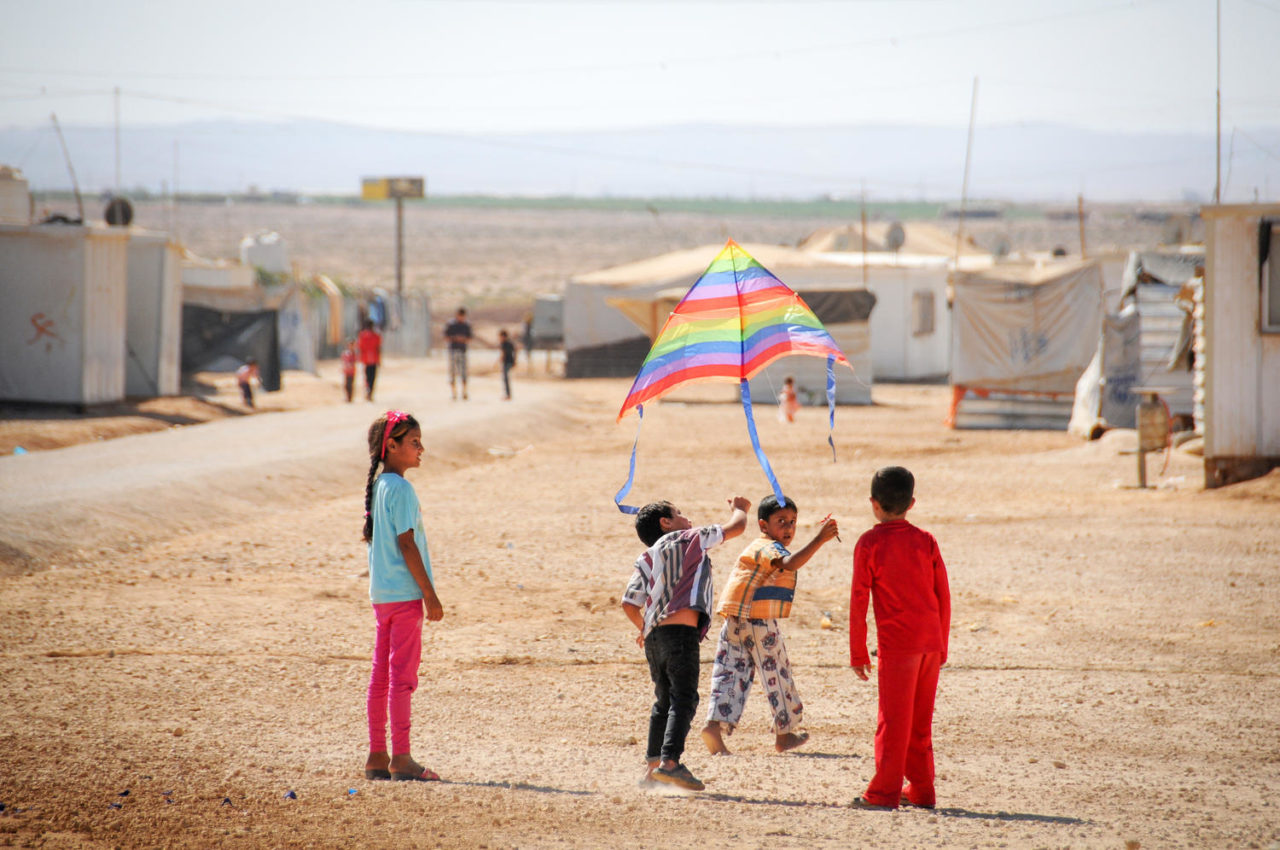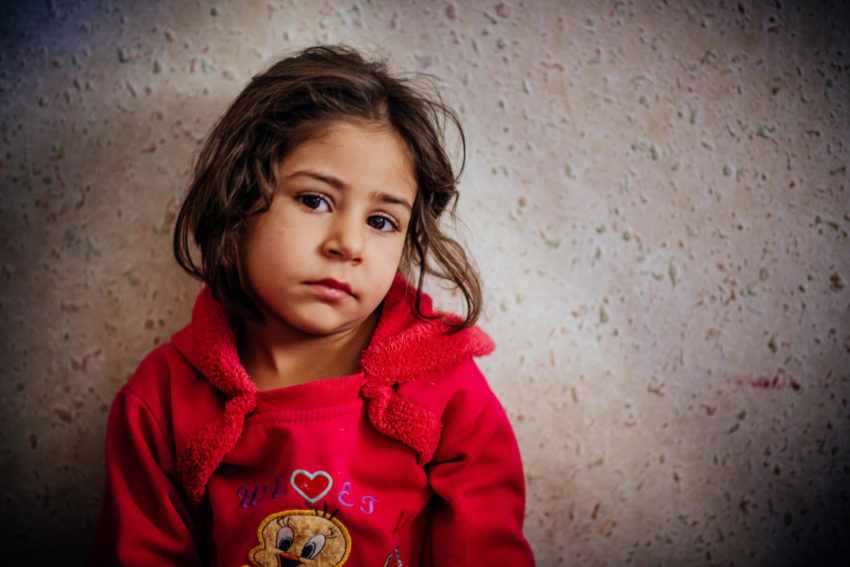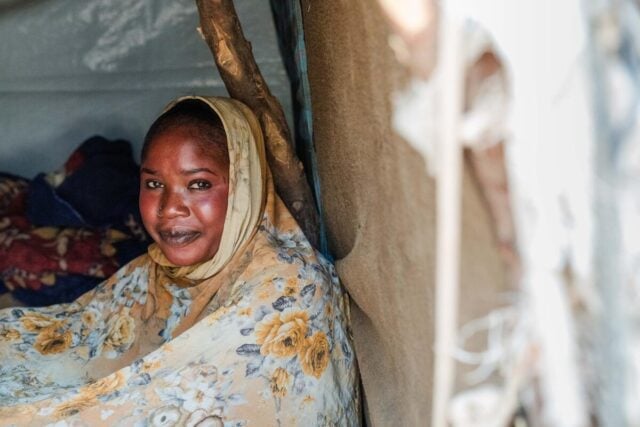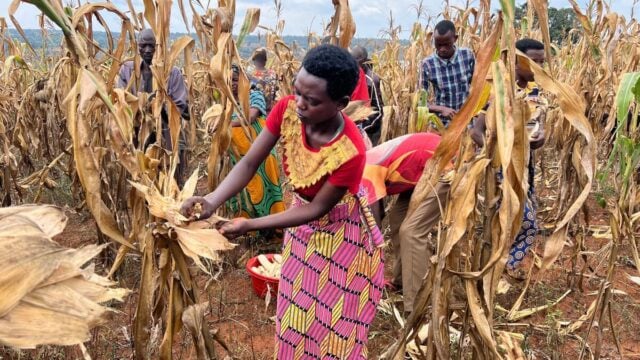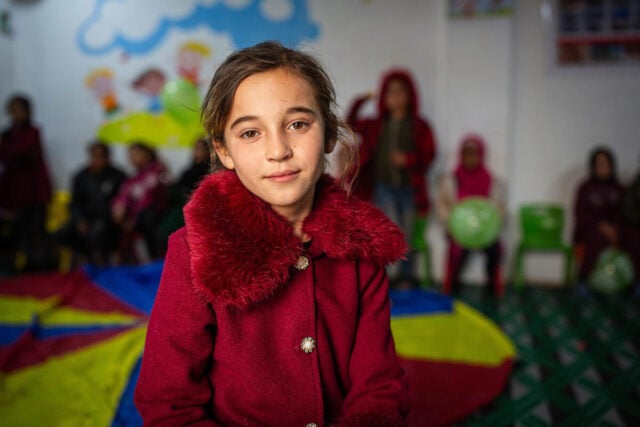A plastic bag flutters in the desert wind brushing a desolate Jordan landscape. A Syrian refugee boy grasps a string that not only keeps the bag from flying away but also provides a tenuous grip on his fading childhood.
For Syrian refugee children, kite flying keeps aloft memories of family, friends, and their once-promising future. The children salvage remnants of their war-shattered lives, even if it’s just with a dirty plastic bag that can barely stand up to the breeze.
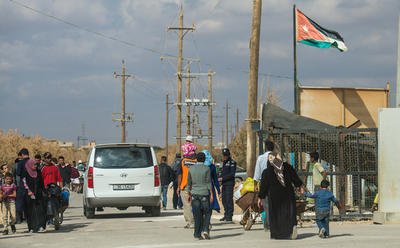
Now in its fifth year, fighting in Syria has unleashed one of the worst humanitarian crises in modern history, uprooting half of the nation’s population. More than 3.2 million people have sought refuge in neighboring countries, including Lebanon, Jordan, Turkey, and Iraq. Nearly half are children.
The United Nations Children’s Fund cited 2014 as one of the worst years on record for children, prompting executive director Anthony Lake to declare: “Never in recent memory have so many children been subjected to such unspeakable brutality.”
As many as 15 million children are caught up in violent conflicts in Syria, Iraq, Ukraine, Central African Republic, and South Sudan — including those internally displaced or living as refugees. Globally, an estimated 230 million children live in countries and areas affected by armed conflicts, according to UNICEF.
If the world continues to turn its back on Syria, it is the children who’ll continue to suffer the most.—Wynn Flaten, director of World Vision’s Syria crisis regional response
The Syrian conflict’s death toll is staggering: More than 8,500 children, including 2,000 under age 10, the U.N. reports.
“It’s heartbreaking,” says Wynn Flaten, director of World Vision’s Syria crisis regional response, covering northern Syria, the Kurdish Region of Iraq (KRI), Jordan, and Lebanon. “These children have come from one of the world’s most dangerous places. Children need so much support to be able to recover from that, but the odds are against them. Children need safe shelter, but that is only the beginning. They need special protection. They need to get into schools. Even when they can get in, often the classrooms are overflowing with extra students, or they are bullied to such an extent that they no longer even want to go.
“If the world continues to turn its back on Syria, it is the children who’ll continue to suffer the most,” Wynn says. “More needs to be done to peacefully stop this conflict, and more support needs to be given to host countries and humanitarian actors. We’re going to be dealing with this one for years to come.”
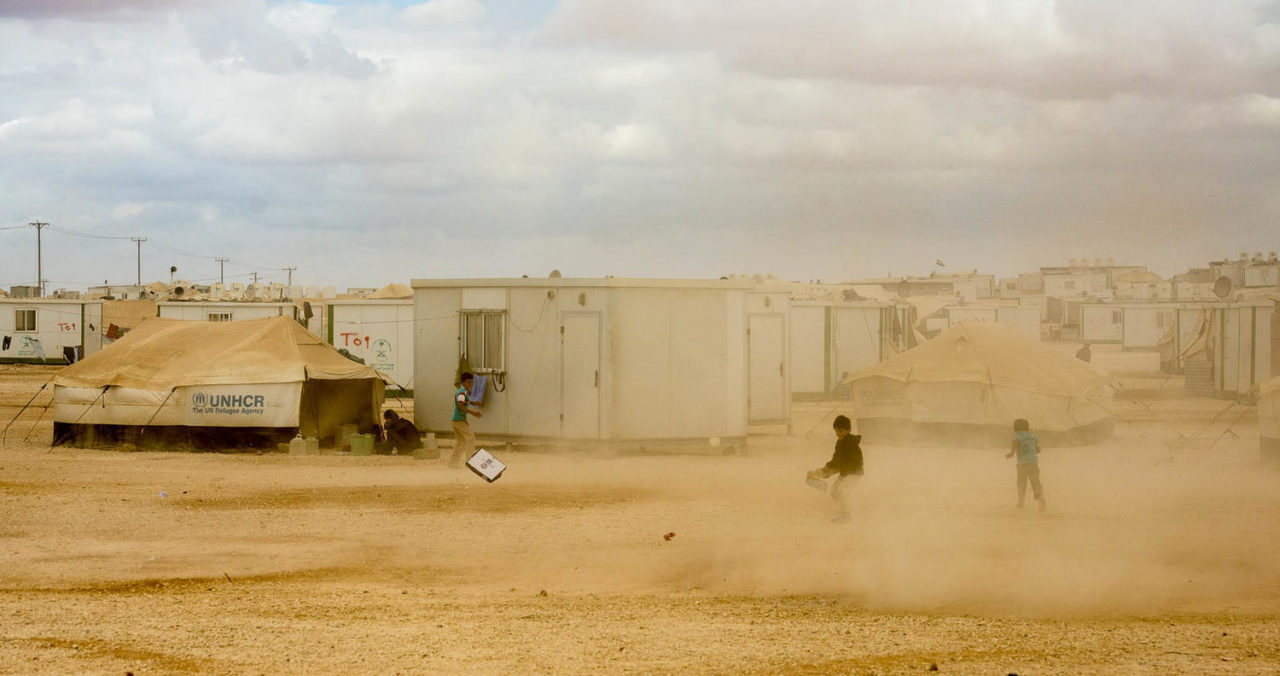
War’s lasting effects
Children who have escaped violence in Syria and Iraq speak of the brutality — losing parents, loved ones, and friends — and being displaced and out of school.
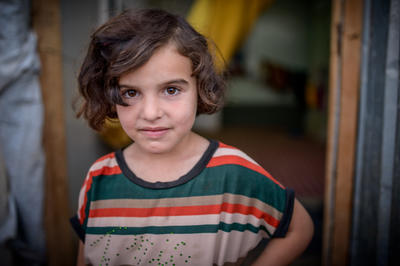
“All I want is to be with my best friend,” says Sedra, 7, a Syrian refugee girl in Za’atari Refugee Camp in Jordan. “I want to go home.”
“I miss my life, my teachers, my school,” says Hasan, 13, another child living in Za’atari, now the second-largest camp in the world.
Some refuse to speak at all.
“My granddaughter does not talk. She is afraid,” says Sara Hassan Kako, an Iraqi woman who has 29 grandchildren. She and her family fled their ancestral homeland in Sinjar, enduring a 100-mile journey on foot to Dohuk in the Kurdistan Region of Iraq. She says the backbreaking trek is nothing compared to her “heartbreak when I see these children who were so alive and are now sad and quiet. They went to school. They were learning. Now, nothing.”
Her grandchildren, she fears, will bear the scars of war for the rest of their lives.
“Many children caught in the crossfire of these conflicts lose their childhood literally overnight. They’re forced to take on new roles and adult responsibilities and pressures. There’s limited opportunities to play with friends, to continue their schooling,” says Lucy Strickland, World Vision’s specialist in education in emergencies, based in Geneva, Switzerland.
She says that without education and safe spaces in which children can be with their peers again and continue learning, they face increased protection risks. Girls can fall prey to early marriage and pregnancy, increased exposure to sexual and gender-based violence, and, of course, dropping out of the education system altogether with a high likelihood of never returning.
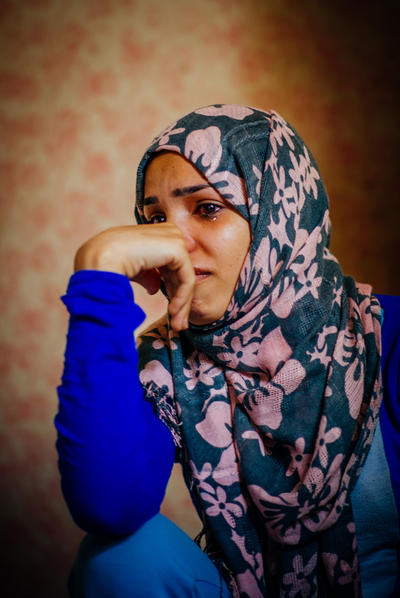
On the day of Isra’a’s final exam, warring factions destroyed her school in Damascus, shattering her way of life and dreams of earning a high school diploma. “I was in school when the bombs hit,” the 18-year-old said during an interview in 2013. “The windows were blown out, glass everywhere, and some hit my friends in the face and hands.”
A year later, the former honor student still spends her time locked up inside a tiny flat with at least seven others on the most impoverished street in Zarqa, Jordan.
The decline in education for Syrian children has been the sharpest and most rapid in the history of the region, according to UNICEF. For children inside Syria, the reasons for halting education are many: schools destroyed or occupied by warring groups or displaced families, teachers absent or deceased, and insecurity. For refugee families who don’t live in camps, paying rent and other expenses can make it impossible for parents to afford transportation, books, and tuition for their children.
Khalida, 8, longs for the day when she can run through her cobbled streets to hug her teachers and classmates. “I loved school. I was learning. I wanted to learn how to write. I loved it,” she says.
Now the child spends her days playing with sticks strewn on a vacant lot in Dohuk, Iraq, where she and at least 100 families are seeking shelter. She pretends twigs are pencils, like the ones in school. Her delicate fingers trace Kurdish letters printed on a recycled pink-and-white poster used as a door in the shelter. She used to want to write children’s stories, she says. Now, she shrugs and whispers: “I have nothing to say.”
I loved school. I was learning. I wanted to learn how to write. I loved it.—Khalida, 8
Once living in neighborhoods in middle-class suburbia, millions of children and their families now seek shelter in tented settlements or abandoned and unfinished buildings in neighboring nations overwhelmed by refugees. Khalida lives in a cement stall once used by farmers to sell their vegetables and chickens at the market. More than 100 children and their families live in this place carved out from a concrete structure and parking lot set along a busy thoroughfare.
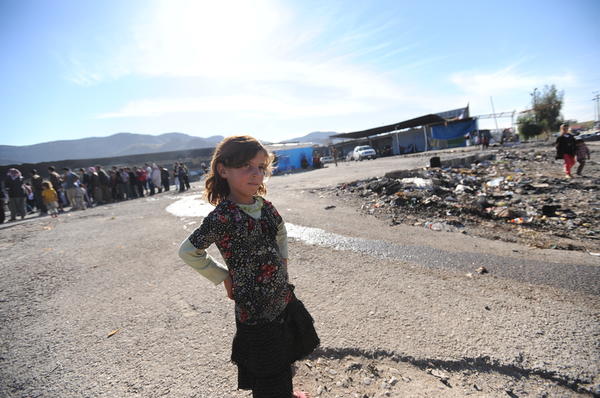
Khalida’s days are filled with caring for her two younger siblings, as well as cleaning and cooking. Her father, slain by militants in a recent upsurge of violence, has left her mother unable to function.
Families are grateful to escape the ravages of bombings and shelling that flattened their homes and neighborhoods, but they now fear the clutches of poverty and despair.
In Lebanon, Syrians overrun certain border communities, where poverty is increasing at an alarming rate. Tensions rise as overcrowded schools leave Syrian children outside of classrooms.
“Boys become adolescents and, as we’ve seen play out in refugee camps in Jordan, often perpetrators of violence and petty crime simply through limited access to any kind of stimulus or engagement in something more meaningful,” Lucy says.
Other children are forced into roles as head of the family and breadwinner.
Edo is a sole provider — at age 10. He stopped being a child overnight when militants robbed him of his father, killing the man in his hometown of Sinjar, in Iraq’s Ninewah province, in August.
In school, I had a chance to learn, to study and to be able to become someone someday. That is all I want. I want to become someone someday — to do something.—Edo, 10
Torn by violence, Edo, his mother, and younger siblings fled with nothing more than the clothes on their backs to an informal camp in Dohuk, Iraq. Their harrowing ordeal of survival is etched in the child’s face where lines are forming across his brow. He worries about taking care of his family, especially his distraught mother.
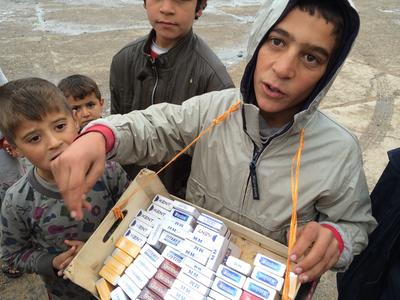
“I must work selling cigarettes,” Edo says. Men in the shelter pooled enough money to help Edo fill his tray with cigarettes so he could earn the equivalent of US$1 a day, barely enough to buy food or water.
His days of running down the hallways of his school are replaced with cautious steps through traffic. The road back to school is becoming distant, he says. “In school, I had a chance to learn, to study and to be able to become someone someday. That is all I want. I want to become someone someday — to do something.”
In Lebanon, Jordan, and the Kurdistan Region of Iraq, World Vision runs education programs in Child-Friendly Spaces to help displaced children learn to read, write, and do math. Child-Friendly Spaces are one of World Vision’s emergency interventions providing children with protected environments to play, socialize, learn, and express themselves during the recovery process. They provide psychosocial programs, an outlet to help children to process the images of war, violence, and loss.
“It’s often really hard to explain to people what education and protection activities look like in an emergency context — people often assume it means building a structure and giving out pencils and books, whereas it’s so much more than this,” Lucy says. “It’s about providing safe, protective spaces in which children can become children again, and over time, resume some sense of normal.”
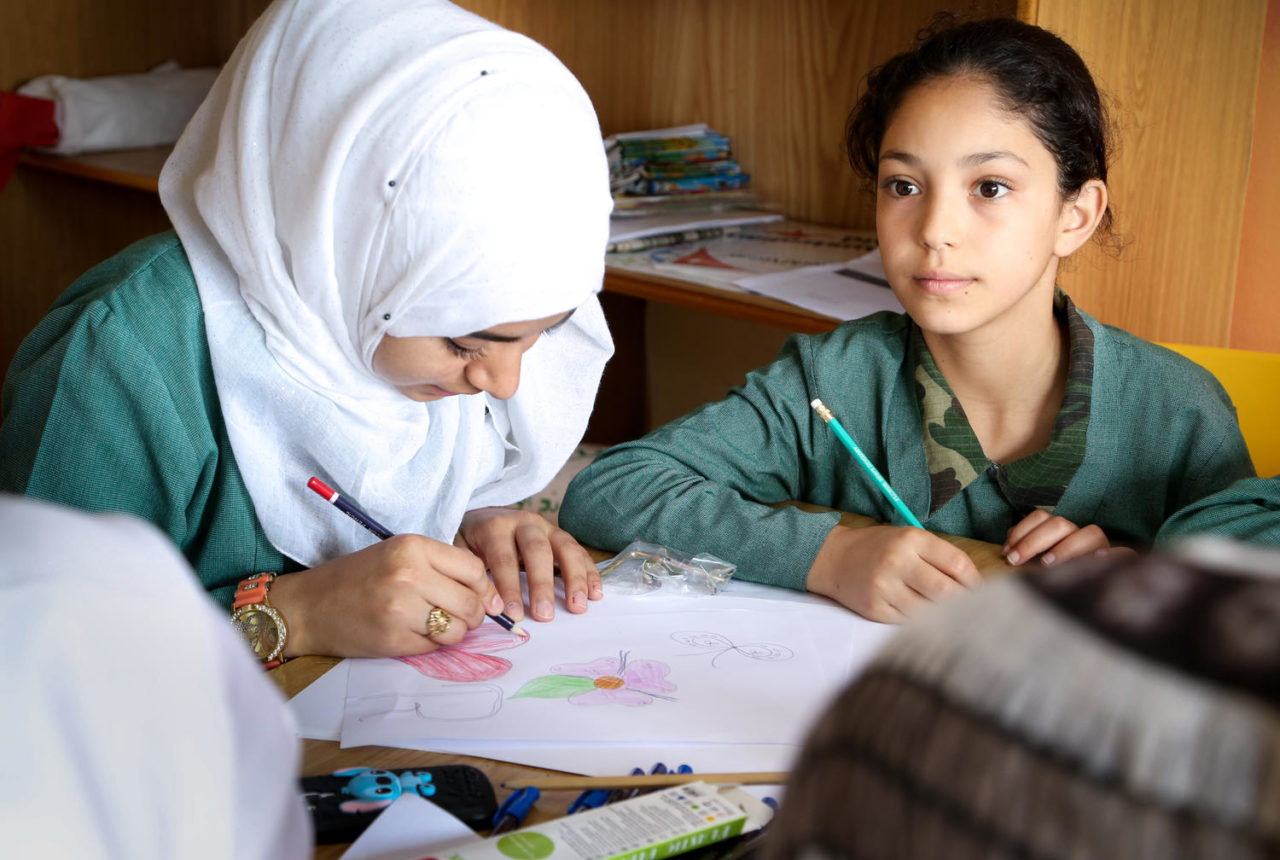
‘God is calling us to go’
The impact of the crisis on a generation of children is a grave concern, World Vision U.S. President Rich Stearns says. While most will survive the conflict physically, the immediate and long-term well-being of children remains a serious concern for humanitarian organizations like World Vision.
“God is calling us to go farther and deeper into the hot spots of today’s troubled world,” Rich says. “It is heartbreaking to witness the human suffering in the refugee camps and the makeshift communities in these fragile states, where often the absence of basic infrastructure and government services is just the beginning of the problem. And too many of those who suffer the greatest are the children.”
Since the beginning of the crisis, World Vision has helped more than 1.7 million people in Syria, Lebanon, Jordan, and Iraq. World Vision hopes to continue to increase that number and support the needs of many more children and their families.
Aid efforts include distributing personal and household supplies; providing monthly food vouchers, stoves, and fuel for heating and cooking; and facilitating access to clean water and sanitation facilities.
Programs for children include remedial and supplemental education so they can return to school, as well as Child-Friendly Spaces, safe places where children can play and receive counseling to help cope with their difficult circumstances.
“We can make sure refugee communities and their hosts have clean water and shelter,” Rich says. “We can make sure that children, some of whom have already been out of school for up to four years, continue with their education. We can and do provide help for the psychological wounds they have suffered, and we can reduce the risks of being abused, neglected, and exploited. We can help people live productive lives, even while they wait for an opportunity to return home.”
Twelve-year-old Haya, a Syrian refugee living in Jordan whom Rich met in 2013, still clings to the hope of returning to her neighborhood, her school. She had penned a letter to the outside world, pleading, “We fear you are forgetting us.”
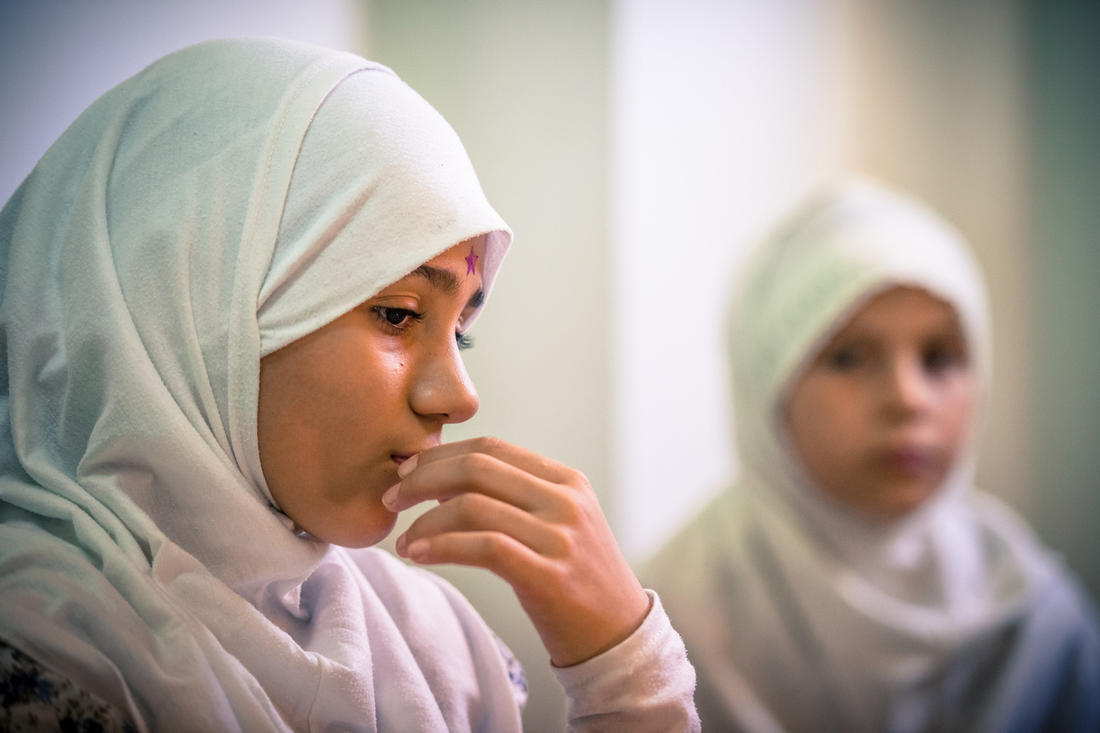
She longs to hear news of her father. Her mother fears him dead. Fraught with anxiety and fear, her mother escorts her to school and home. They only have each other. The two sit quietly in the makeshift school in Irbid, Jordan, where World Vision provided Haya remedial education classes to help her and thousands of other Syrian children bridge the gap between schools. She says learning the Jordanian curriculum, which includes English, is testing her patience.
“It’s very hard, and I am trying to keep up. I will stay in school no matter how difficult it is,” Haya says. “I want all Syrian children to stay in school, to return to school instead of going to work, because the future depends on us.”
She says she will advocate for all Syrian children to learn and to dream so that they can grow up to become “someone someday” — even if for many the real meaning of childhood is fading.
